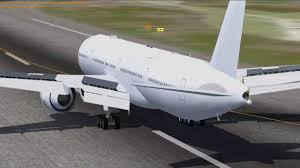Flight Controls Continue
Yesterday's blog provided an overview of the Primary Flight Control System (PFCS). Today is all about Roll Control. Ailerons, flaperons and the spoilers control the roll. Just like the old time aircraft there is a cable connecting the control wheels with a mechanical feel and centering mechanism.
The control wheels each have 3 independent transducers, that send position signals to the ACEs, and then to the PFCs. There is also a for transducer in the event a pilot overrides the bank angle protection. Two trim switches supply power to the aileron trim actuators.
AILERONS, FLAPERONS and SPOILERS:
Aileron movement is 33 degrees up and 19 degrees down. Whereas Flaperons move 11 degrees up and 34 degrees down. Two Power control units (PCUs) operate each flaperons and aileron. The inboard and outboard spoilers move a maximum of 60 degrees up. However, spoilers 4 and 11 only move up 45 degrees. Unlike the ailerons and flaperons the Spoilers only have one PCU.
AILERON AND FLAPERON DROOP
With flaps extended the the ailerons and flaperons droop to increase lift, yet continue to supply roll control.
AILERON LOCKOUT
Like many other aircraft at high speed the ailerons are locked out. At low speed, they unlock. The PFCs are in charge of this process.
SPEEDBRAKE
The speedbrake lever has three positions (down, armed and up) and moves a multiple channel transducer, and data goes to the ACEs and then the PFCs. In flight the PFCs direct the speedbrakes to extend as a function of the speedbrake lever movement, however at high speeds some spoilers are prevented from moving. When the plane lands, the auto speedbrake actuator automatically moves the speedbrake.
Speedbrakes auto deploy with the lever armed or not. When the lever is armed and the airplane is on the ground (sensed by no tilt) and the thrust lever moves to idle, the speedbrakes deploy. If the speedbrake lever is not armed, then the auto deploy feature occurs while on the ground (no tilt), and at least one thrust reverser is pulled into the idle detent.
Keep studying!
Enjoy the Journey!
XOX Karlene





No comments:
Post a Comment
Thank you for your comment! If your comment doesn't appear immediately, it will after I land. Enjoy the journey!